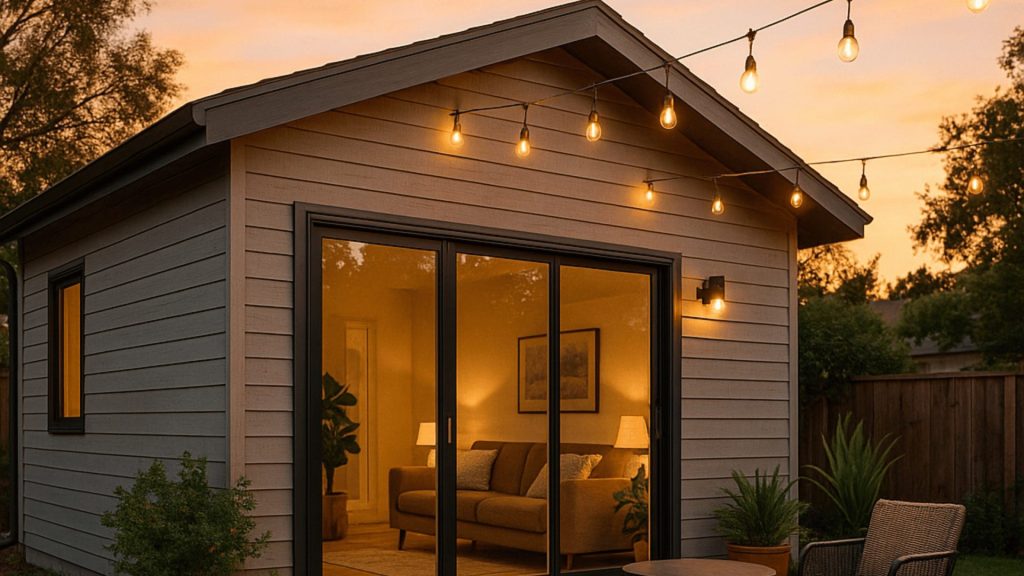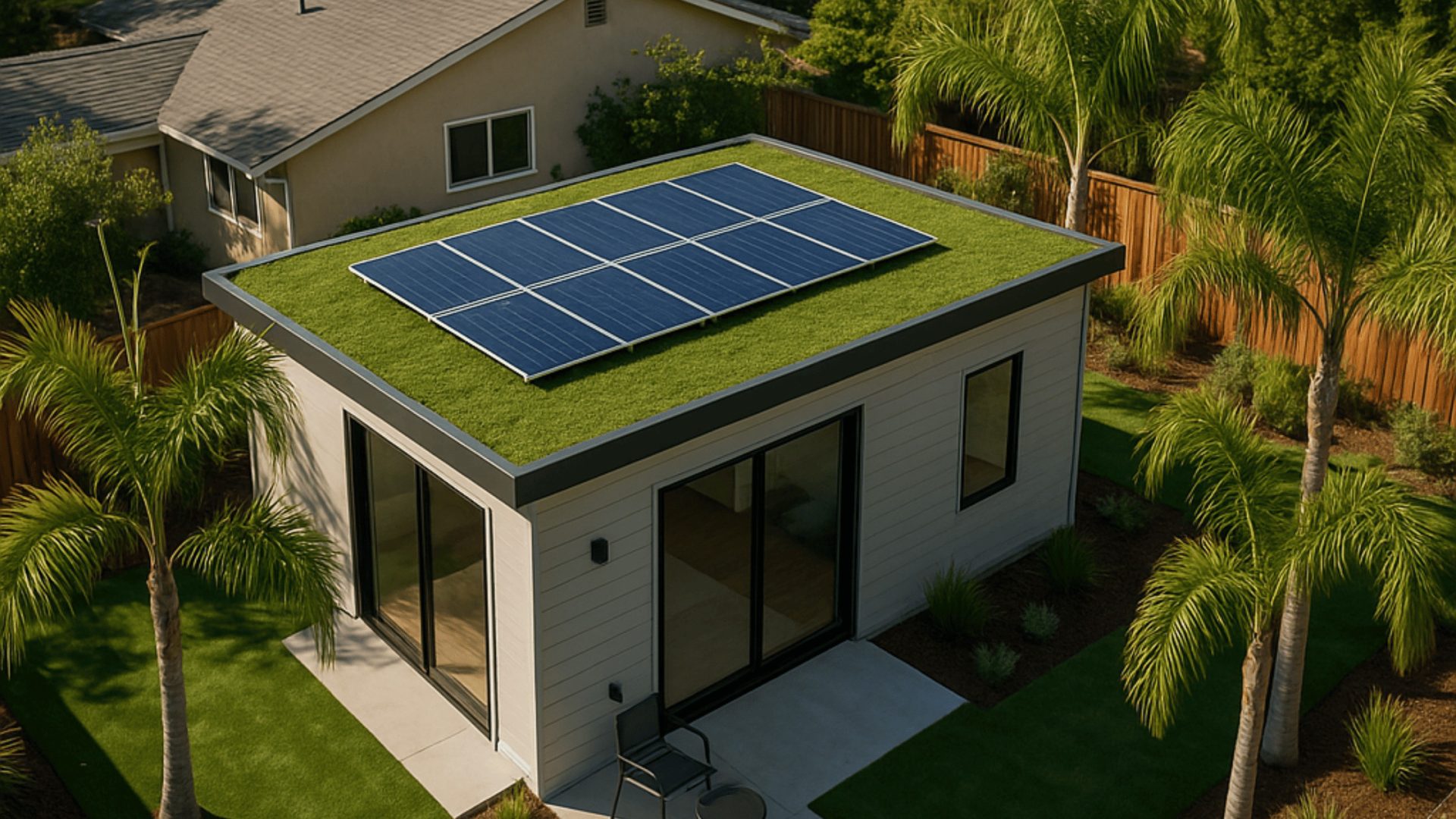Prefab ADU Projects: Prefab ADUs have become one of the most talked-about housing solutions in California, offering homeowners a faster and often more affordable way to add space. Whether it’s an in-law suite, a rental unit, or a backyard cottage, the promise of a ready-made living space is appealing.
But while the idea sounds simple, the reality can be very different. Many homeowners begin with excitement, only to face setbacks such as construction delays, cost surprises, or designs that don’t meet code.
Why does this happen? In most cases, the problem isn’t the concept of prefab ADUs but the way the project is handled. A rushed site assessment, overlooked permits, or a vendor cutting corners can turn what should be a smooth process into a frustrating experience.
That’s why learning how to choose the right partner is just as important as the design itself. in this guide, we’ll explore why some prefab ADU projects fail and share practical steps you can take to properly vet a vendor so your investment pays off.
Why Prefab ADU Projects Sometimes Fail
Poor Site Assessment and Planning
A project begins with the land it sits on, yet many failures come from skipping detailed site assessments. Vendors who don’t properly evaluate soil conditions, property slopes, or access points create issues down the line.
Imagine ordering a prefab ADU only to find out that a crane can’t reach the backyard or utility connections will require expensive trenching. These are preventable problems that stem from rushed planning.
Permitting and Code Compliance Issues
California has encouraged ADU construction through state-level laws, but each city enforces its own rules. Vendors without local experience may overlook height limits, setbacks, or parking requirements. Even a missing form in the permit application can delay projects for months. In the worst cases, homeowners are forced to redesign their units after installation, adding cost and stress.
Low-Quality Materials and Workmanship
Prefab should not mean “cheap.” Unfortunately, some vendors cut corners with inferior materials or subcontract work to unskilled crews. Problems such as leaking roofs, warping floors, or poorly sealed windows can surface within the first year. Homeowners then face repair costs that could have been avoided with a reliable builder.
Unrealistic Timelines and Budgets
Many vendors advertise fast installation times, but those estimates often leave out site prep, inspections, or utility work. Homeowners who believe the “quick build” promise may face surprise delays. Likewise, underestimating costs leads to budget overruns that strain finances and delay completion.

Weak Communication and Oversight
Even when construction quality is strong, communication breakdowns cause trouble. Vendors who fail to update clients or coordinate subcontractors properly create frustration and confusion. Without clear project management, small mistakes can snowball into bigger setbacks.
Red Flags When Choosing a Prefab ADU Vendor
Spotting problems early can save you from failed projects. Be cautious if a vendor shows any of these warning signs:
- Refuses to share references or completed project tours
- Provides contracts that lack details on scope, pricing, or warranties
- Gives vague or lump-sum pricing without itemized costs
- Has limited knowledge of local permitting rules
- Uses pushy sales tactics or offers “too good to be true” promises

How to Vet a Prefab ADU Vendor
The key to avoiding costly mistakes lies in careful vetting. Homeowners should approach vendor selection with the same attention they’d give to hiring any major contractor.
Verify Licensing and Insurance
Always confirm the contractor’s license through the California Contractors State License Board. A valid license means they’re legally allowed to perform the work. Ask for proof of liability insurance and bonding, which protects you from potential financial risks.
Review Past Work and Testimonials
A strong vendor will showcase completed projects. Look for quality in finishing, design consistency, and durability. Whenever possible, visit an existing ADU in person to see how it has held up over time. Talking to past clients gives a clearer picture of the vendor’s reliability.
Assess Transparency in Pricing and Process
Trustworthy vendors provide detailed, line-item quotes. This helps you understand exactly what you’re paying for and prevents hidden fees. A clear roadmap of the project, from design to final inspection, shows the vendor is organized and professional.
Ask About Local Experience
Not every city in California follows the same ADU guidelines. A vendor with local experience understands the nuances of city-specific codes, utility requirements, and neighborhood design restrictions. Their knowledge helps streamline the process and reduces the chance of costly changes.
Understand Warranties and Aftercare
A prefab ADU is an investment meant to last decades. Ask about structural warranties and coverage for finishes. Vendors who provide strong aftercare support demonstrate confidence in their workmanship and commitment to client satisfaction.
Practical Checklist Before Hiring
Use this quick checklist before committing to a vendor:
- Confirm contractor’s license and insurance are valid
- Request at least three recent project examples
- Speak directly with past clients
- Review a detailed contract with itemized pricing
- Ensure the vendor explains their permitting process
- Ask about warranty terms and after-build support

Why the Right Partner Matters
A successful ADU project is about more than just the building. It requires thoughtful planning, strong project management, and a vendor who prioritizes your goals. With the right partner, the process feels collaborative rather than stressful.
At Nestadu, we’ve guided countless California homeowners through the ADU journey. Our team combines technical knowledge with transparent communication to ensure every project meets local requirements and client expectations. From the first consultation to the final walkthrough, we focus on craftsmanship and reliability so that homeowners feel confident in their investment.
Conclusion
Prefab ADUs offer incredible opportunities for homeowners, but failed projects often leave lasting frustration. Most problems come down to poor planning, weak communication, and unreliable vendors. By spotting red flags early and asking the right questions, you can avoid common pitfalls and protect your investment.
If you’re considering a prefab ADU in California, vendor selection is the most important decision you’ll make. With a trusted partner like Nestadu, you’ll have peace of mind knowing your project is built with care, transparency, and long-term value in mind.




